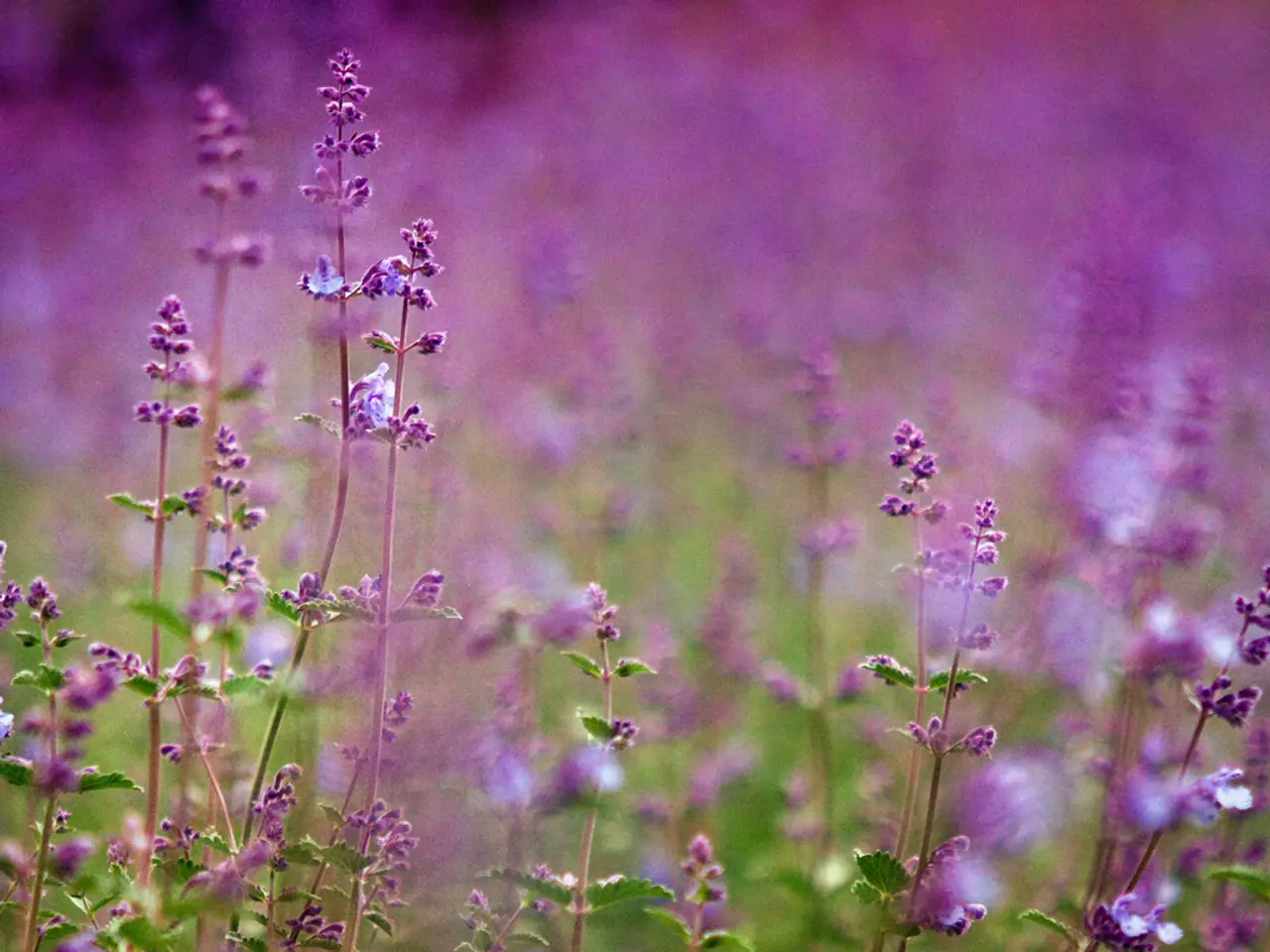The Relevance of the One-Third Rule in Today's Context
In the garden or on the balcony, lavender can be a real eye-catcher, adding a touch of charm and fragrance. With the right care and the right pruning at the right time, lavender can stay healthy, attractive, and thrive for multiple seasons.
Lavender loves sun and dryness, so watering should be done in the morning or evening, not in the midday heat. When it comes to pruning, always cut above the old wood, not into the woody part. This helps prevent the lavender from becoming woody and promotes vigorous regrowth.
The one-third-two-thirds pruning method for lavender is significant. This method promotes healthy regrowth, maintains a compact and attractive plant shape, and encourages prolific flowering. The main idea is to remove about one-third of the plant's stems after flowering to stimulate new green growth while avoiding cutting into old wood, which lavender struggles to regenerate from.
The timing and method of the two main prunings are as follows:
- After Flowering Prune (Main Prune): This is the most important and is done by cutting off about one-third of the plant—primarily the flower stalks and some green growth—just above the young shoots or green stems. This is usually done at the end of summer, from late July to mid-September, depending on the climate and variety. Pruning at this time encourages vigorous new growth that hardens off before winter, preparing the plant for dormancy and ensuring abundant blooms next year. Pruning too late, especially in autumn or winter when the plant is dormant, can weaken lavender.
- Spring Prune (Light Correction): A lighter, optional prune may be performed in early spring (March to April), after the last frost, to remove any frost-damaged, dead, or irregular shoots. This helps shape the plant and supports balanced growth going into the growing season. However, this prune should be done early enough to avoid cutting off energy the plant would use to grow new shoots.
In colder climates, heavy fall pruning is avoided to prevent frost damage due to tender new shoots; instead, the main pruning shifts to early spring. Milder climates allow the main prune in late summer to early fall after flowering. Light trimming can also be done in late summer if the plant has time to recover before winter.
To dry lavender, it's best to cut it during the main flowering period, not afterwards when the flowers are dry. The aroma is most intense when the flowers are cut on a dry day when they are also dry. Only remove wilted flower heads and dried stems when pruning lavender.
The compact varieties 'Peter Pan' and 'Coconut Ice' are suitable for balcony and pot culture, with 'Peter Pan' being approximately 45 cm high and 'Coconut Ice' approximately 30 cm high. The first prune should be done when no more frosts are expected, usually between late February and late March. Watering should be done directly on the soil, not over the leaves, to prevent fungal diseases like powdery mildew.
In summary, lavender needs to be pruned twice a year, once in spring and once after flowering in summer. With the right care and the right pruning at the right time, lavender can stay healthy, attractive, and a real eye-catcher in the garden or on the balcony.
The compact varieties 'Peter Pan' and 'Coconut Ice' are ideal for home-and-garden settings, such as balconies and pots, and their care includes following a one-third-two-thirds pruning method that maintains their compact and attractive shape while promoting healthy growth and prolific flowering. This method involves pruning about one-third of the plant's stems after flowering, ensuring it doesn't cut into old wood, which can lead to disease. Lavender carefully cultivated this way can thrive and serve as a charming lifestyle addition in one's home-and-garden or balcony setting.




